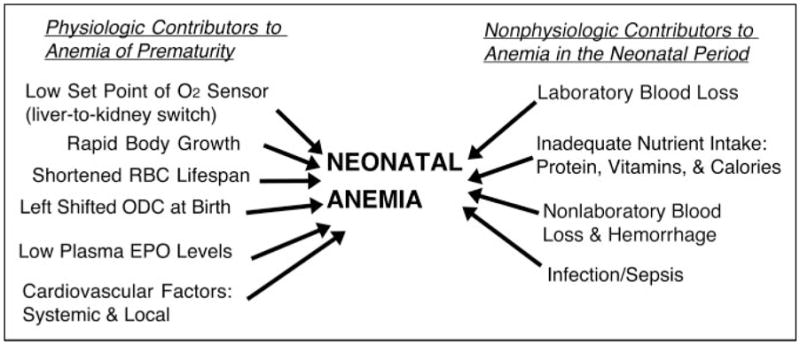Figure 2.

Pathophysiology of neonatal anemia. Contributors to anemia that develops during the neonatal period include physiologic and nonphysiologic factors. Physiologic factors that are developmentally regulated are viewed as likely contributors to anemia of prematurity. Those that are nonphysiologic are acquired and are more amenable to intervention; some are iatrogenic. The contributors included in the figure are operative at varying times, depending on the developmental and clinical circumstances, with many occurring simultaneously. The effect of each on the severity of anemia varies. During the first postnatal weeks, when severe neonatal cardiorespiratory illness is at its peak and frequent laboratory testing is most intense, phlebotomy loss among preterm infants is typically the most important contributor to neonatal anemia and the need for red blood cell transfusion. EPO=erythropoietin, ODC=oxygen dissociation curve, RBC=red blood cell
